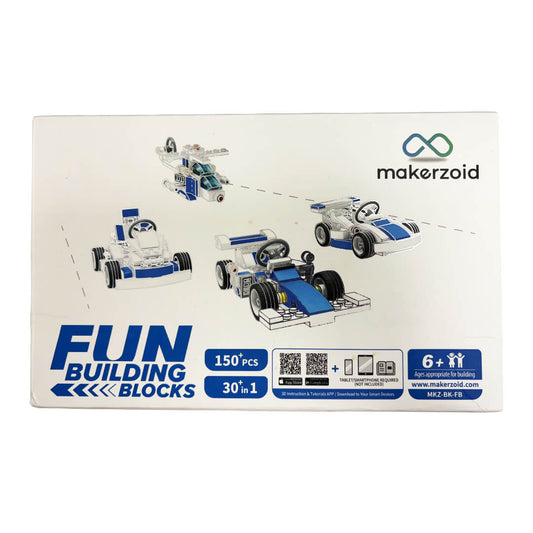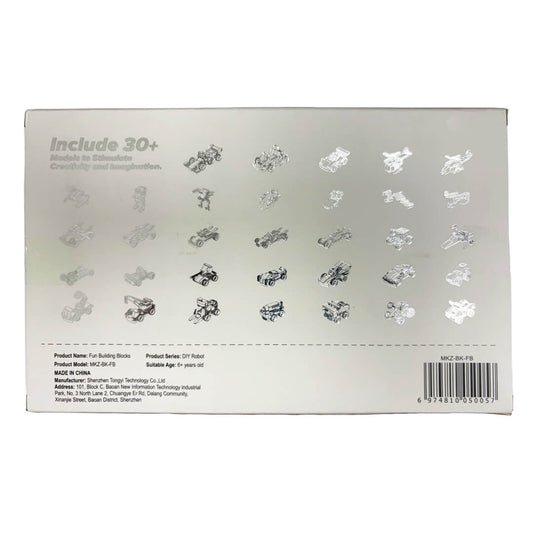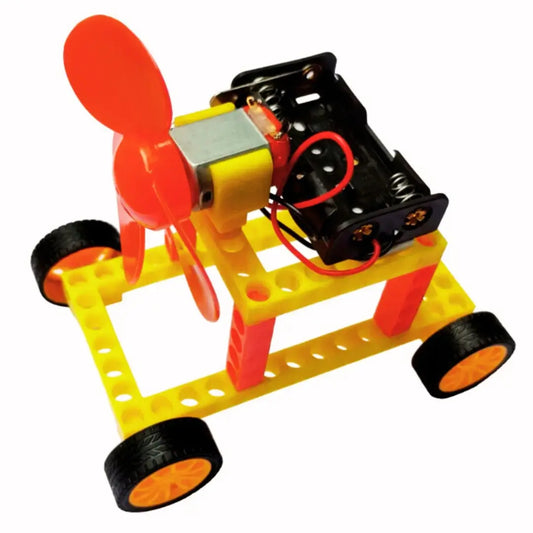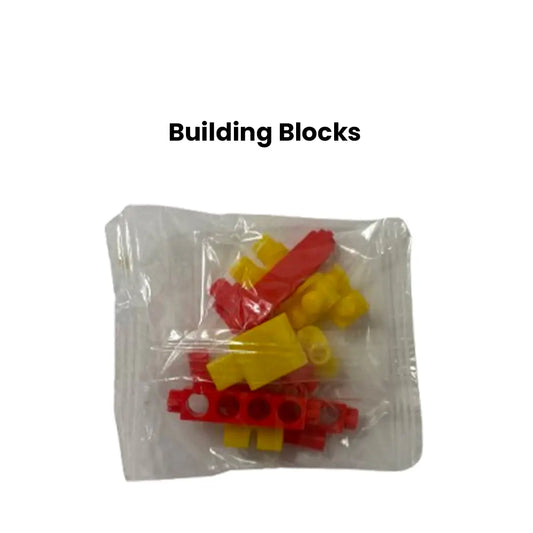
Jumper Cables Price: What You Need to Know Before Buying
IEM RoboticsTable of Contents
Factors That Affect Jumper Cables Price
How to Choose the Right Jumper Wires?
Where to Buy Jumper Cables at the Best Price?
Why Choose IEM Robotics?
Conclusion
Jumper cables price varies widely based on factors such as wire gauge, material, length, insulation, and brand. These essential tools help jump-start vehicles and are used in various automotive and industrial applications. Selecting the right jumper cables requires careful consideration to ensure efficiency, durability, and safety.
Understanding the key elements influencing their pricing can help you make an informed decision and get the best value for your money. This guide explores what affects jumper cables’ price, how to choose the best ones for your needs, and where to find quality options at competitive prices.
Factors That Affect Jumper Cables Price
Jumper cables are essential for every vehicle owner, allowing them to jump-start a dead battery in emergencies. While they may seem straightforward, jumper prices vary significantly based on several factors. Understanding these factors can help you make an informed decision and get the best value for your money. Below are the key elements that influence the Jumper cables price. .
1. Wire Gauge and Thickness
One of the most critical factors affecting the price of jumper cables is their wire gauge, which refers to the thickness of the cable. The gauge number follows an inverse rule—the lower the gauge number, the thicker the wire. .
For example, a 2-gauge jumper cable is thicker than a 10-gauge one. Thicker cables can carry current, making them more efficient for jump-starting vehicles with larger engines. They also generate less resistance, reducing the likelihood of overheating or power loss. .
However, these benefits come at a cost, as lower-gauge cables are more expensive due to the increased amount of conductive material used. .
2. Material Quality
The material used in constructing jumper cables plays a significant role in determining jumper prices. The two primary materials used for jumper cable wiring are pure copper and copper-clad aluminum (CCA). .
Pure copper cables offer superior conductivity, ensuring efficient power transfer with minimal energy loss. They are also more durable and corrosion-resistant, making them a long-lasting investment. However, pure copper is expensive, so jumper cables from this material tend to have a higher price tag. .
On the other hand, CCA cables are more affordable because they use a thin layer of copper over an aluminum core. While they still function adequately for most vehicle owners, they have higher resistance and lower conductivity than pure copper cables. It means they may not perform as well in extreme weather conditions or with larger engines. .
3. Length of the Cables
Jumper cables come in various lengths, typically 6 to 25 feet. The length of the wires directly affects their cost, with longer cables being more expensive due to the increased material required for production. .
Longer cables offer more flexibility, allowing users to connect batteries even if the vehicles are not parked in an ideal position. It can be especially beneficial in tight parking situations or assisting another driver. However, longer cables also introduce more electrical resistance, slightly impacting performance. .
If you frequently encounter situations where a longer reach is necessary, investing in a more extended set of jumper cables is worth the extra cost. However, 12 to 16 feet is usually sufficient for most standard vehicle owners. .
4. Insulation and Coating
The type and quality of insulation and coating used on jumper cables impact their durability, safety, and price. High-quality insulation materials such as silicone or thick PVC provide better protection against extreme temperatures, moisture, and wear and tear.
Silicone insulation is highly flexible and resistant to cracking in cold weather, making it an excellent choice for colder climates. However, it is also more expensive than standard PVC insulation.
Lower-quality jumper cables with thin insulation may be prone to cracking or melting under high temperatures, posing safety hazards. Investing in cables with better insulation ensures longevity and safety, making them a worthwhile expense.
5. Brand and Manufacturer
Like most products, the brand and manufacturer of jumper cables significantly impact their pricing. Well-established brands with a reputation for quality, reliability, and superior customer support often charge higher prices for their products. These brands invest in rigorous quality control, better materials, and extensive testing to ensure their cables perform optimally under different conditions.
Conversely, lesser-known or generic brands may offer cheaper alternatives, but the quality and reliability of these cables can be inconsistent. While some budget-friendly options perform well, others may have poor conductivity, weak clamps, or inferior insulation.
Purchasing from a reputable brand ensures peace of mind, as these companies often provide warranties and better customer service in case of defects or issues. However, researching customer reviews and product specifications can help you find a reliable yet affordable option if you are on a tight budget.
How to Choose the Right Jumper Wires?
Jumper wires are essential for various applications, including electronics, automotive systems, and industrial machinery. Choosing the right jumper wires ensures efficiency, reliability, and safety in your projects. Several factors influence the selection of jumper wires, including their intended use, wire gauge, length, material, and overall quality. Below is a detailed guide to help you choose the right jumper wires for your needs. .
1. Consider the Application
The first step in choosing the right jumper wires is determining their intended use. Jumper wires are used in different fields, including:
Electronics: In prototyping and circuit design, jumper wires connect different components on a breadboard or circuit board. These wires are typically thin and flexible and have various connector types, such as male-to-male, male-to-female, and female-to-female.
Automotive: Jumper wires are used in vehicles for electrical repairs, connecting sensors, and troubleshooting issues. They must handle higher currents and have durable insulation to withstand heat and vibrations.
Industrial Applications: Jumper wires connect heavy-duty machinery and control systems in factories and industrial environments. These wires require higher gauge ratings, strong insulation, and resistance to environmental factors like moisture and extreme temperatures.
2. Choose the Right Wire Gauge
Wire gauge refers to the thickness of the wire, which directly affects its ability to carry electrical current. The American Wire Gauge (AWG) system is commonly used to measure wire thickness. The lower the gauge number, the thicker the wire and the more current it can carry.
Thin wires ranging from 22 AWG to 30 AWG are commonly used for electronics projects because they are suitable for low-voltage applications.
For automotive applications, thicker wires between 12 AWG and 18 AWG are preferable since they need to handle higher currents.
For industrial use, wires as thick as 8 AWG or lower may be necessary to support heavy-duty electrical loads.
3. Select the Appropriate Length
Another critical factor is the length of the jumper wire. If the wire is too short, it may not reach the intended connection points, causing inconvenience. Conversely, excessively long cables can lead to unnecessary resistance and voltage drops.
Short wires (typically 4-12 inches) connect components on a breadboard for small-scale electronics projects.
For automotive and industrial applications, longer wires (several feet) may be needed to bridge connections between distant points.
4. Opt for High-Quality Material
The material of the jumper wire significantly affects its performance. The two most common materials are:
Pure Copper: Offers excellent conductivity, durability, and corrosion resistance. Copper jumper wires provide better electrical performance but are slightly more expensive.
Copper-Clad Aluminum (CCA): These wires are made of an aluminum core with a thin layer of copper. They are more affordable but have higher resistance and are less durable than pure copper wires.
5. Balance Price and Quality
While cost is always a factor, selecting jumper wires based solely on price can lead to poor performance and safety issues. Cheaper wires may use lower-quality insulation, weaker connectors, or materials that degrade quickly.
Budget-friendly options may be sufficient if you need wires for a temporary or low-power project.
Investing in higher-quality wires ensures reliability and durability if you require wires for long-term use or high-power applications.
Where to Buy Jumper Cables at the Best Price?
When purchasing jumper cables, it is essential to find a balance between reliability, quality, and affordability. A trusted supplier ensures you get durable and efficient cables that meet your needs without overpaying. One of the best places to buy high-quality jumper wires at a competitive price is IEM Robotics.
Why Choose IEM Robotics?
Superior Quality: IEM Robotics offers well-crafted jumper wires for strong and stable electrical connections, ensuring efficiency and longevity.
Convenient Online Shopping: With an easy-to-navigate website, you can quickly browse, select, and order jumper wires from the comfort of your home.
Trusted by Customers: Many buyers have praised the quality and performance of IEM Robotics' jumper wires, making it a reliable choice.
Fast and Reliable Delivery: Orders are processed efficiently to ensure timely shipping, so you get your jumper wires when needed.
Conclusion
Jumper cables and wires are essential for automotive, electronics, and industrial applications. Understanding the factors affecting Jumper cables prices—such as wire gauge, material, length, insulation, and brand—helps you make a well-informed purchase. Choosing high-quality jumper wires ensures efficiency, safety, and durability, making them a valuable investment. While budget-friendly options exist, prioritizing quality over price guarantees better performance and longevity. For reliable jumper cables at competitive prices, consider trusted suppliers like IEM Robotics. Investing in the right jumper cables ensures you’re always prepared for unexpected situations, making them a must-have in every vehicle emergency kit or electrical project.








